Initials from Choir Books
These initials belonged to a magnificent set of liturgical manuscripts which were among the finest art works created in Florence during the decades around 1400. They combine the monumentality of panel paintings with the exquisite delicacy of manuscript illumination.
The Choir Books from which these initials came were illuminated between 1370 and 1506 by successive generations of artists. They were made at the Camaldolese monastery of Santa Maria degli Angeli, the leading intellectual and artistic centre in Florence c. 1400. Its scriptorium produced sumptuous manuscripts for religious houses in Tuscany and the Veneto as well as for its own community. The Camaldolese monks sang out of these Choir Books while celebrating religious feasts. The volumes, mutilated during the Napoleonic invasion of Italy (1797-1809), are still in Florence (Biblioteca Laurenziana, Corali 1-19). The initials, which were excised from them and sold on the art market, are now dispersed in public and private collections across the globe. These four initials graced the pages of the earliest volumes, produced from 1370 onwards.
Learn more about these initials by exploring the sections below or selecting one of the images on the right. Discover further details by choosing any of the images, where you can view the hotspots by clicking on ![]() .
.
The initials depicting the Presentation in the Temple and St Clement are among the earliest works of Don Silvestro dei Gherarducci, dating to the 1370s. By the 1390s, he was the most distinguished Florentine illuminator and after his death in 1399, his right hand was venerated as a relic. The other two initials have been attributed to various artists.
The Choir Books to which three (and perhaps all four) of these initials belonged were made for the use of the Camaldolese monks at Santa Maria degli Angeli between 1370 and c.1450.
During the Napoleonic invasion of Italy (1797-1809), the initials were cut out of the volumes which remain in Florence (Biblioteca Laurenziana, Corali 1-19). Marlay cutting It. 13A and MS 5-1979 were fol. 42 and fol. 159 respectively in Corale 2. Marlay cutting It. 13.i was fol. 62 in Corale 19. Marlay cutting It. 13.ii might have been fol. 19 in Corale 3 or may have belonged to another, lost set of Choir Books illuminated in Florence between 1373 and 1382.
Subsequently, Marlay cutting It. 13A belonged to Sir Samuel Meyrick (1783-1848), while Marlay cuttings It. 13.i and It. 13.ii were at the Museo Cavaleri in Milan. All three were bequeathed to the Fitzwilliam Museum in 1912 by Charles Brinsley Marlay (1831-1912).
MS 5-1979, which had belonged to Joseph Henry Fitzhenry (1836-1913) and Sir Thomas Ralph Merton (1888-1969), was purchased by the Fitzwilliam Museum in 1979.
The historiated initials marked the start of texts chanted by the Camaldolese monks at religious feasts throughout the year. They came from two types of Choir Books, Graduals and Antiphoners, which contained the sung parts of the Mass and the Office respectively. The letters belonged to the opening word of the text sung on each feast – the Introit to the Mass in Graduals and the responsory or antiphon for the relevant office in Antiphoners.
The range of pigments used to paint these four initials is remarkably similar. Some differences can, however, be observed, as may be expected for works painted over four decades. The common pigments include carbon black, lead white (used on its own and mixed with other pigments to modify their hue), vermilion, red lead, ultramarine blue, organic pinks and mosaic gold. Green hues were obtained by mixing azurite blue with two different yellow pigments. Gold leaf was laid over a ground containing gypsum and a red bole, and burnished to a high shine. Egg yolk was used as a binder in some areas of each initial.
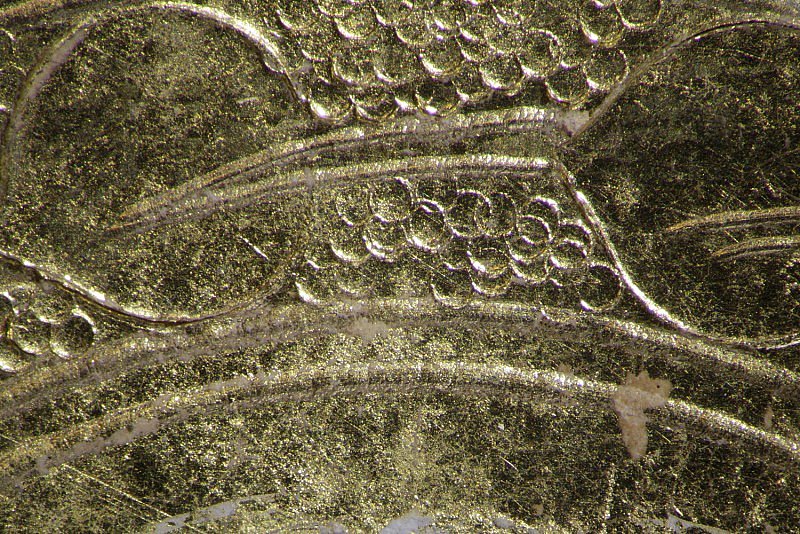
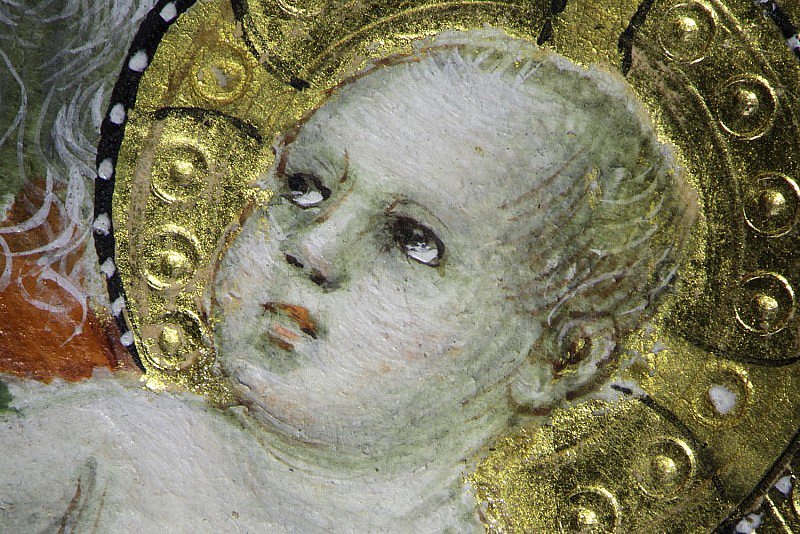
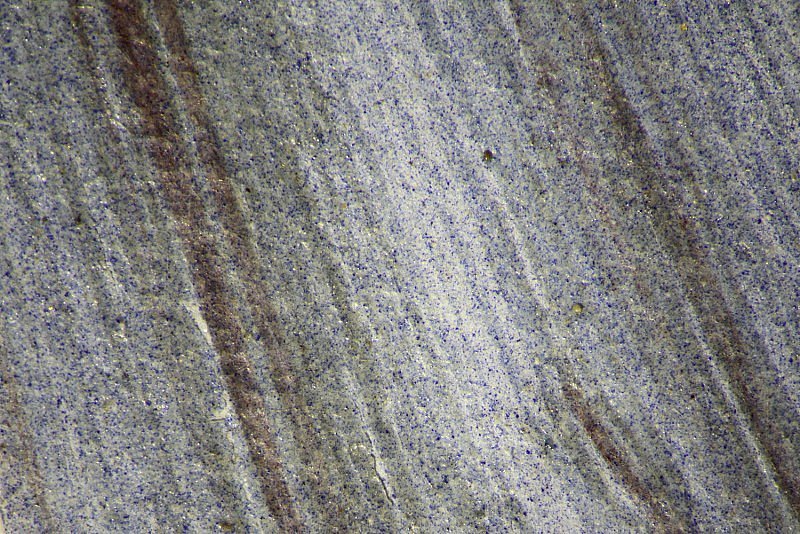
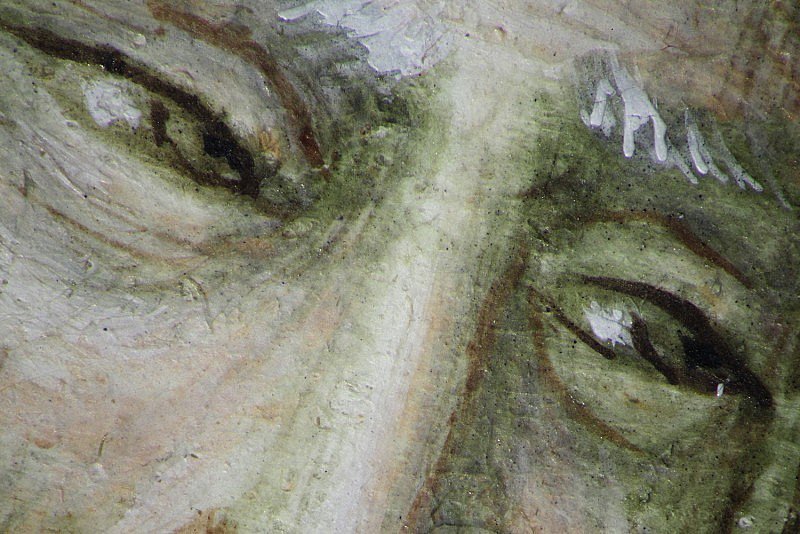
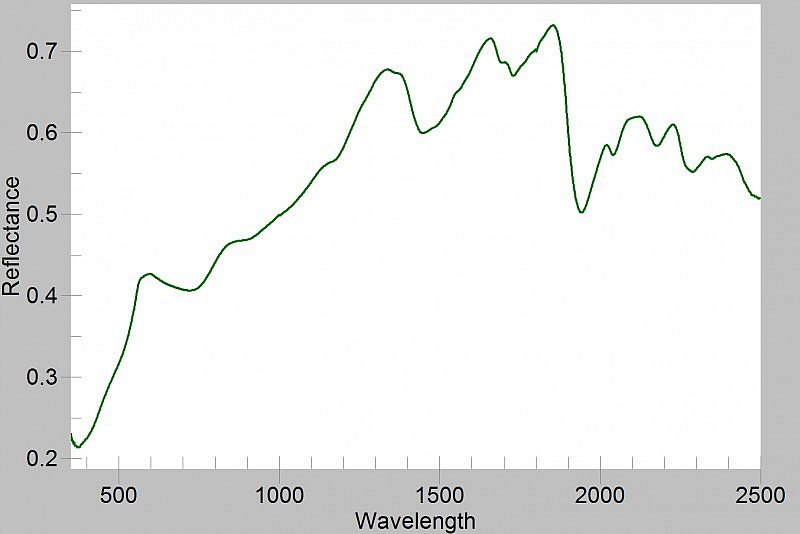
Presentation in the Temple
Historiated initial S from a Gradual, 1370-1375
The initial S introduced the Mass for the feast of the Purification of the Virgin (2 February) in Corale 2, a Gradual made for the monastery of Santa Maria degli Angeli in Florence in 1370-1375. As in many medieval and Renaissance images, the Purification of the Virgin, indicated by the white dove in Joseph’s hands, is conflated with the Circumcision of Christ. Mary and Joseph have entrusted the infant Christ to Simeon and Anna, while the priest behind, knife in hand, is ready to perform the circumcision. Painted by Don Silvestro dei Gherarducci, the image reveals his debt to Sienese painting. The model for the composition is Ambrogio Lorenzetti’s eponymous altarpiece completed in 1342 for the Crescentius Chapel in Siena Cathedral (now in the Uffizi, Florence). The tiled floor imparts a sense of depth to the pictorial space. The intricate designs on the haloes, each displaying a different pattern (hotspots 1 and 2), emulate the innovative punchwork of Sienese artists from the early 1300s.
Three different blue pigments were used in this image: most blue areas were painted with ultramarine, occasionally shaded with an organic red dye which yields a purplish hue, visible in the temple’s walls and in the folds of Anna’s mantle (hotspot 3). Ultramarine was also used for the blue leaves in the border, but azurite was added in the dark blue areas, and the leaves were outlined with indigo.
Related content: Initials from Choir Books
- Artists: Don Silvestro dei Gherarducci (1339-1399)
- Texts and Images: Presentation in the Temple
- Description and Contents: Physical Description
- Description and Contents: Script and Textual Contents
- Artists' Materials: Differences in palette
- Artists' Materials: Selective use of egg yolk binder
- Artists' Techniques: Gold tooling
- Artists' Techniques: Painting the flesh
